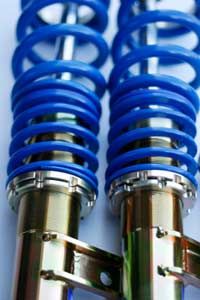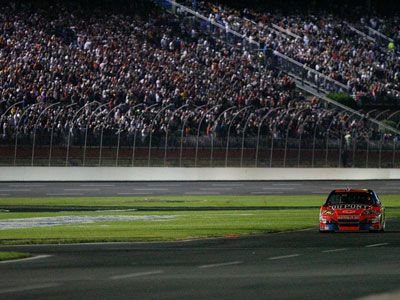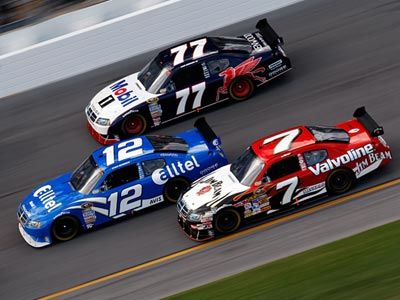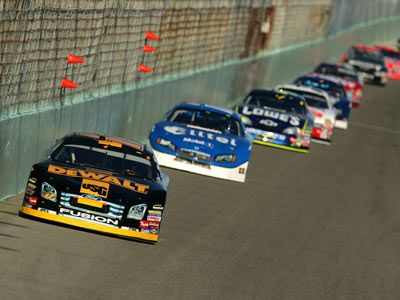The driver of a stock car gets all the attention after a big win, but he or she would never be able to take home a trophy if not for the team that constantly tweaks and fine-tunes the car. Throughout the preparation and during the actual race, pit crews and mechanics stand by to make any necessary alterations to improve the car's capabilities.
You might not think the suspension of a stock car has that much to do with success on a flat, smooth track, but don't be mistaken. Rarely is a track's surface perfect, considering how roughly it's driven on, so suspension is actually an area of primary focus to many teams. Depending on the demands of a specific track, the driver's past performance there and the car's balance in different conditions, the suspension may need to be completely rebuilt for each racetrack. That kind of precision takes a lot of time and effort.
Advertisement
The suspension system consists of a variety of components, including the springs, shock absorbers, sway bars, steering assembly and chassis.
In this article we'll learn about the role and importance of the steering bushings, brackets and knuckles in stock car suspensions and a brief history about them. We'll also talk about sway bars and how they're chosen based on the track and driver needs.
Shocks and springs are an ever-important part of a suspension system. This article will reveal how they work, and why their role in maneuvering high-speed stock cars is so crucial.
Even wonder about the governing rules for stock car chassis components? In this article we'll explore how the entire framework is laid out and put together.
For now, sit back and enjoy the ride while we examine the fine points of stock car suspension.
Advertisement



